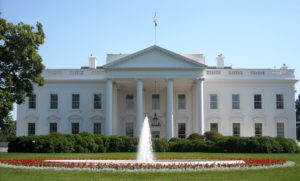 It’s nearly that time again, as we’re less than two weeks away from the 2022 midterm elections.
It’s nearly that time again, as we’re less than two weeks away from the 2022 midterm elections.
The reason we referred to them as midterms, of course, is that they occur at the midway point of each President’s term – effectively serving as a kind of exam to test each incumbent President. The conventional wisdom, then, is that the higher a President’s approval ratings, the better the President’s party will perform and vice versa.
I decided to put that notion to the test by compiling the approval ratings for every post-war President ahead of their first midterm election. For this exercise, I relied on FiveThirtyEight’s Presidential approval archives, comparing each President’s 645th day in office. I excluded Presidents who took over after their predecessor died or resigned to keep the timelines in sync.
The result was 11 Administrations, whose approval ratings naturally fit into four separate categories. For the most part, it broke down how you would expect, yet there’s a curious development that could prove pivotal on November 8th.
Presidents with Approval Ratings in the Sixties
Eisenhower: 62.2%; 19 House Seats Lost, 2 Senate Seats Lost
Kennedy: 61.8%; 4 House Seats Lost, 4 Senate Seats Gained
Bush 43: 61.4%; 8 House Seats Gained, 2 Senate Seats Gained
Unsurprisingly, the two Presidents with the best first midterm performances – John F. Kennedy and George W. Bush – were also the beneficiaries of exceptionally high approval ratings going into their contests. At this point in October 1962, JFK was carefully extracting the U.S. from the Cuban Missile Crisis, a feat that would allow him to make record gains in the Senate.
Bush similarly benefited from his own foreign crisis, using his post-9/11 popularity on the campaign stump to become the only Chief Executive on this list to gain House and Senate seats during his first midterm.
Nevertheless, the man with the best approval rating of all had a middling performance, as Dwight Eisenhower lost his narrow House and Senate majorities in 1954. Of course, the Dixiecrat hold on the South was still in place back then, which makes comparisons difficult.
Presidents with Approval Ratings in the Fifties
Nixon: 57.2%; 12 House Seats Lost, 1 Senate Seat Gained
Bush 41: 52.5%; 7 House Seats Lost, 1 Senate Seat Lost
The next category contains a pair of Presidents with solid numbers who did relatively well in their midterms. Nixon’s tumultuous tenure would see many highs and lows, but the election season in 1970 was comparatively smooth sailing as the incumbent was able to make a rare gain in the Senate.
George H.W. Bush, on the other hand, had stellar ratings during his first three years but was in a rare valley as the 1990 midterms approached. In September of that year, Bush struck a budget deal with Congressional Democrats that included new taxes. As you might remember, Bush memorably pledged to reject any such deal during the 1988 campaign. Still, the incumbent’s numbers were strong enough to keep losses in both chambers low.
Presidents with Approval Ratings in the High Forties
Carter: 48.1%; 15 House Seats Lost, 3 Senate Seats Lost
Clinton: 47.8%; 54 House Seats Lost, 8 Senate Seats Lost
Obama: 46.6%; 63 House Seats Lost, 6 Senate Seats Lost
Now this is the section where you’d expect to find those Presidents who experienced nightmare midterms, and two of these three certainly qualify. The exception is Jimmy Carter, who was still enjoying a boost from the Camp David Accords which allowed him to avoid a down-ballot bloodbath – at least until 1980.
Meanwhile, Presidents Clinton and Obama each took office with large Democratic majorities and in the midst of economic downturns. They both used those majorities to pass plenty of legislation, but the economy didn’t turn around fast enough for either of them, and they both suffered gigantic losses in their first midterm as a result.
Presidents with Approval Ratings in the Low Forties
Trump: 42.4%; 42 House Seats Lost, 2 Senate Seats Gained
Reagan: 42.0%; 26 House Seats Lost, No Net Change in the Senate
Biden: 41.8%; To Be Determined
So this is where it gets complicated, not to mention highly relevant to our own current circumstances.
After all, you’d expect the Presidents with the worst approval ratings heading into the midterms to experience the worst losses, but for Ronald Reagan and Donald Trump that wasn’t exactly the case. Sure they both took huge hits in the House, with Trump losing his majority and Reagan his ‘boll weevil’ conservative coalition. Nevertheless, those currents didn’t extend to the upper chamber, where Regan lost no seats and Trump even managed to gain two.
Of course, what makes this dichotomy especially intriguing is that this exact scenario, losing the House majority while retaining or even gaining in the Senate, remains the most likely outcome for Biden this year.
I wish I could explain this phenomenon. Perhaps it’s a fluke, the result of a few favorable Senate maps for incumbent Presidents in 1982, 2018 and 2022. Or maybe increasing polarization means Presidential approval ratings are less predictive of midterm results than they once were. Either way, it’s definitely fascinating.